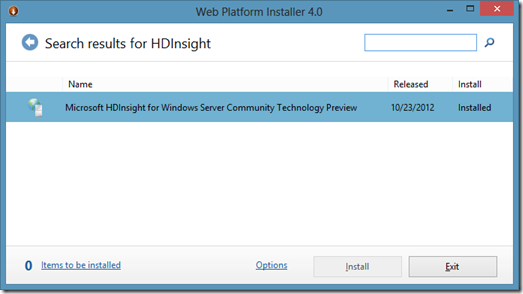Super computing 2012 and new Windows Azure HPC Hardware Announcement
The Super Computing conference attracts some of biggest names in the industry, academia, and government institutions. This year’s attendance was down from 11,000 to about 8,000. The main floor was completely full even without some of the largest Department of Energy labs; travel restrictions and cutbacks have prevented them from setting up some of the largest booths in the past. Universities and foreign supercomputing centers helped to fill up the space. Microsoft booth sat close to the entrance of the exhibit hall which attracted good foot traffic. Don’t miss the 10 minute virtual tour with lots of exiting new hardware, etc, virtual tour ink .
Dr. Michio Kaku, the celebrity physicist and author presented the keynote on “Physics of the Future.” From Microsoft External Research group, Dr. Tony Hey delivered a session on Monday, The Fourth Paradigm - Data-Intensive Scientific Discovery. There were hundreds of sessions and tutorials, technical programs, and academic posters at the conference. This year’s Gordon Bell Prize was awarded to Tsukuba University and Tokyo Institution of Technology on “4.45 Pflops Astrophysical N-Body Simulation on K computer – The Gravitational Trillion Body Problem”. It is a typical large scale HPC problem to solve on the supercomputers.
As many of you know, Microsoft announced new Windows Azure hardware for Big Compute. As a proof of concept, the test cluster ranked #165 on the top 500 list, achieved a power efficiency of 90.2% on top of Hyper-V virtualization. More details at Bill Hilf’s blog: Windows Azure Benchmarks Show Top Performance for Big Compute.
Oakridge’s Titan with 560,640 processors, including 261,632 NVIDIA K20x accelerator cores made #1 on this year’s top 500 list with over 20 Petaflop peak performance.
After walking around the show floor and poster sessions, here are my 12 words that best describes supercomputing,
exascale, science, modeling, bigdata, parallel, performance, cloud,
storage, collaboration, challenge, power, and accelerators.
I’ve added a link to photos taken at the conference with additional comments on industry news and trend.
The Exhibit Hall
This year, SC continued to focus on the Cloud and GPGPU. Both have had amazing progress in the past year. Many vendors are rushing to offer NVidia newly-announced Kepler-based GPU products. Intel now offers their 60 core Phi processor as a competition.
BigData optimized super computers are starting to appear, SDSC’s Gordon (Lustre-based), and Sherlock from Pittsburgh supercomputing center are being used for large scale graph analytics.
HDInsight: Quite a few people came by the Microsoft Booth at the BigData Station. Our customers’ reactions to HDInsight are very positive. They especially liked the fact there’s a supported distribution of Hadoop on Windows; dealing with Cygwin-based solution has been a painful experience for many of them. You can sign up for a free Hadoop cluster (HDInsight) at https://www.hadooponazure.com/ using the invitation link.
Another exciting new development is that you can get a ‘one box’ Hadoop installer for your workstation/laptop for development purposes, the installation is simple.
1. https://www.microsoft.com/web/downloads/platform.aspx Download the Microsoft Web Platform Installer.
2. Search for HDInsight, and click on “Add” to install. (my screenshot shows that I have already installed it myself)
References:
- Great posters on Data & Compute topics: https://sdrv.ms/UG75ja
- My weather demo as a service: https://weatherservice.cloudapp.net/ This demo shows how even individuals can pack complex HPC code into a service to leverage Windows Azure’s computing power.
- HDInsight: https://www.hadooponazure.com/
- SC12 Home Page: https://sc12.supercomputing.org/
- Photos taken at the Conference with detailed comments: Slide show link
- HPC Wire Magazine: www.hpcwire.com



